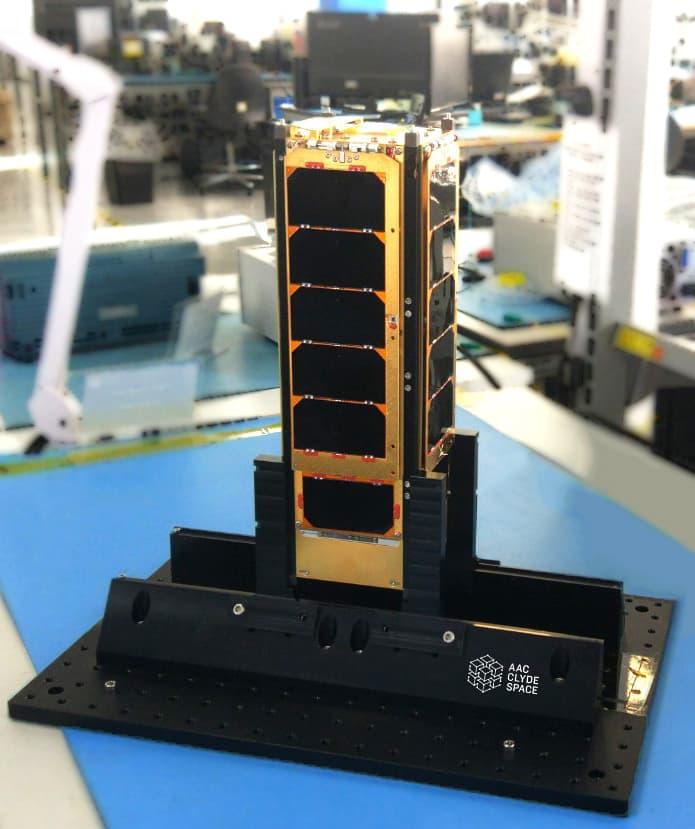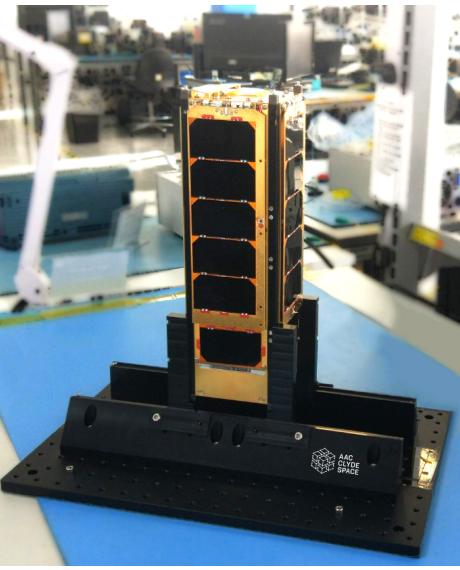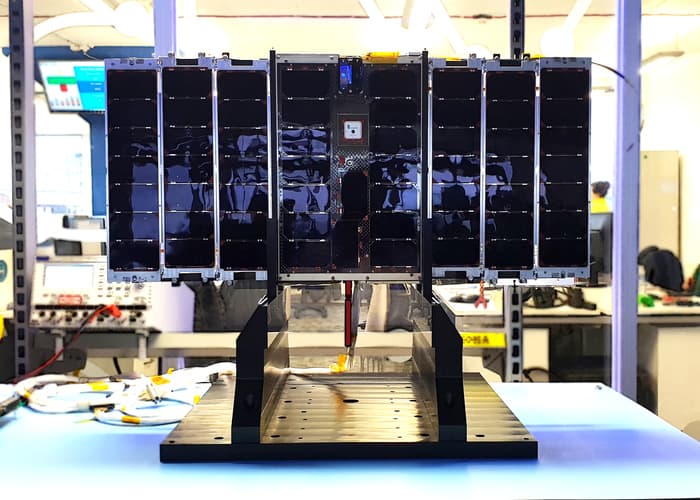
AAC CLYDE SPACE DELIVERS PICASSO, THE GOLDEN CUBESAT
AAC Clyde Space has delivered PICASSO, a 3U CubeSat, to the Royal Belgian Institute for Space Aeronomy at a facility in Delft for pod integration. The satellite is planned to be launched from French Guiana on an Arianespace Vega on the 24th of March 2020.
PICASSO (Pico-Satellite for Atmospheric and Space Science Observations) will measure ozone distribution in the stratosphere, estimate the temperature profile up to the mesosphere, and characterise the plasma in the ionosphere. The Earth Observation mission is the result of an international collaboration, led by the Royal Belgian Institute for Space Aeronomy (BIRA-IASB), and including AAC Clyde Space, ESA (European Space Agency) , VTT Technical Research Center of Finland Ltd and the Centre Spatial de Liège in Belgium. PICASSO will demonstrate a scientific capacity for atmospheric remote sensing with VISION (the hyper-spectral imager) and in situ measurements with SLP (Sweeping Langmuir Probe). This capacity is also strategic for planetary exploration.
AAC Clyde Space built and integrated the gold-plated satellite that will take measurements from low earth orbit for 2 years. The satellite carries two scientific payloads: a hyper-spectral imager in the visible, that will primarily map the ozone in the stratosphere, and a Sweeping Langmuir Probe that will measure electron density and temperature in the plasma around the satellite. Ozone in the high atmosphere is critical for life on Earth as it shields the Sun’s UV radiation, so accurate and timely information about its density is critical for humanity. PICASSO aims to show that such measurements can be successfully done with very small satellites.
“This ambitious mission will give novel opportunities to the scientific community to study our planet, and in turn make better informed decisions. We are delighted to deliver this innovative CubeSat to our customer and look forward to controlling and tracking PICASSO on orbit using our purpose-built ground station, keep your eyes peeled for updates,” said AAC Clyde Space CEO Luis Gomes.
“The PICASSO mission will demonstrate that CubeSats, and more generally small satellites, have reached the technological maturity necessary to turn them into actual scientific tools worth consideration by the Earth Observation community. Thanks to their low cost, which enables them to be deployed as a fleet, they will provide scientific-grade data with a high repetition rate and an unequaled ground coverage.” said BIRA-IASB Project Manager Didier Pieroux.

Sign up to our newsletters for the latest news, projects and more delivered straight to your inbox
"*" indicates required fields


